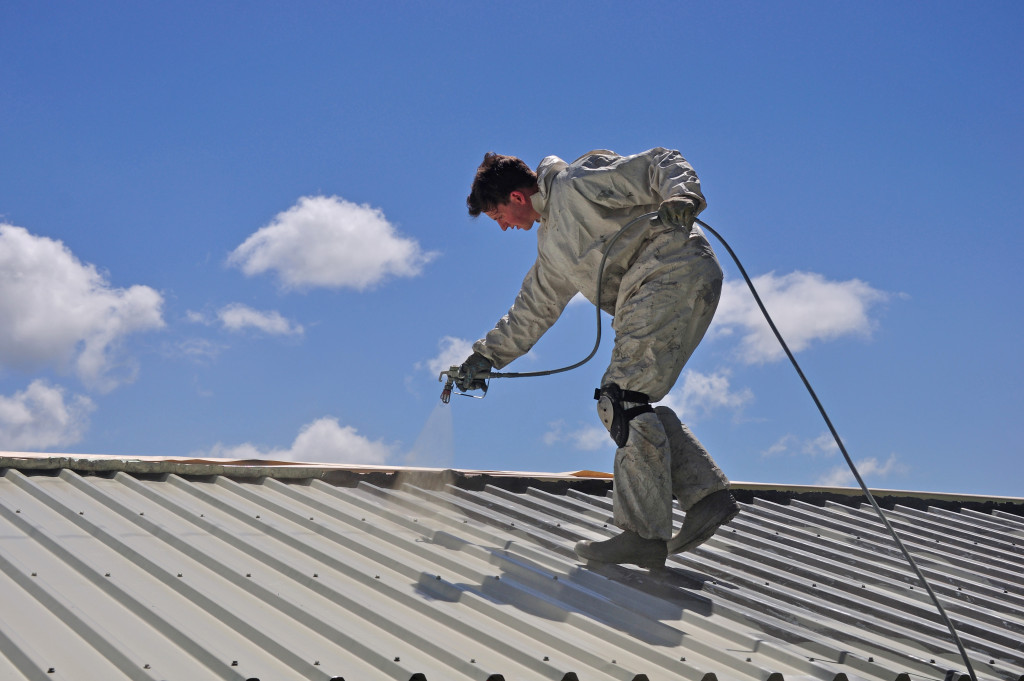Storms can cause a great deal of damage to the United States. They can damage homes, businesses, and other structures. They can also cause loss of life and injuries. In addition, storms can cause power outages and flooding. The overall damage that storms cause to the United States can be significant.
Weather disasters such as storms have cost the country over $100 billion. Experts believe that number will only grow as climate change worsens. The economy takes a huge brunt of this damage, with businesses vulnerable to bankruptcy due to these damages. If you want to avoid paying a lot of money due to storm damages in your workplace, it’s time to be proactive and implement these tips. Starting by making your walls more resilient to winds and storms.
Resilient Walls
The walls of your office are the first line of defense against strong winds and flying debris. Your office could be in serious trouble during a storm if they’re not strong enough. You might want to consider adding some resilient concrete sealers to your walls. It will help the walls withstand high winds and water from the rain and prevent them from collapsing.
You should also add plywood or metal sheathing to the exterior of the building. This will provide an extra layer of protection against wind and debris. Finally, seal all cracks and openings in the walls with caulk or weatherstripping. It will help keep out water and air, which can damage the structure of your building.
Roofs

The roof is one of the essential parts of your office, as it’s what protects you from the elements. Make sure it’s in good condition, and there are no loose or missing tiles. If you have a flat roof, ensure it’s adequately drained to avoid water damage. You should also consider adding a layer of protection, such as an impact-resistant roofing system. This will help deflect debris and wind and prevent water from entering your office.
It might be wise to replace your roof if it’s too damaged. The average cost of roof replacement is around $8,000. It might be expensive, but it can save your office from any storm.
Doors and Windows
Your office’s doors and windows are other weak spots during a storm. Make sure they’re made of solid materials, such as steel or reinforced glass. If possible, install hurricane shutters or roll-down security screens over the doors and windows. This will provide extra protection against wind, rain, and flying debris.
You should also consider investing in impact-resistant doors and windows. They’re a bit more expensive, but they can withstand much force and keep your office safe during a storm.
If you’re in an area prone to flooding, consider installing a flood barrier near your doors. These barriers can help keep water from entering your office and can be easily removed when the storm is over.
Plumbing
Your office’s plumbing is also vulnerable to storm damage. If possible, disconnect any exposed pipes and hoses from the building. It will prevent them from breaking and flooding your office.
You should also invest in a backflow valve. It will help prevent water from entering your office through the drains if there’s a sudden change in pressure. Finally, make sure your sump pump is in good working condition. This will help remove any water that does enter your office during a storm.
Invest in a Generator
If your office is without power, it can be challenging to work. That’s why you should invest in a generator. This will provide the electricity you need to keep your office running during a power outage.
The average cost of a generator is around $2,000. But it’s a small price to keep your office running during a storm. A generator can be expensive, but it’s worth the investment if you want to keep your business up and running during a storm.
Create an Emergency Plan
Aside from all those listed above, an emergency plan is always essential to have an emergency plan in place in case of a storm. This plan should include the contact information for all your employees, as well as where they should go in case of an evacuation. You should also have a list of supplies, such as food, water, and first-aid kits.
Finally, make sure you have insurance that covers storm damage. It will help you recover any losses you incur during a storm.
In conclusion, it’s vital to be proactive about storm damage. By making your office more resilient, you can avoid costly repairs and keep your business running after a weather disaster.


